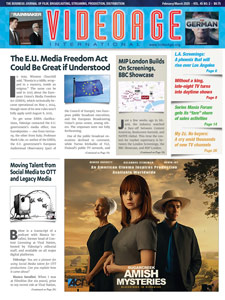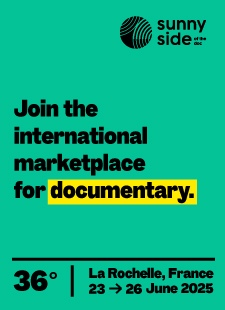An old formula has been revitalized in order to create a new type of revenue stream available to producers and distributors. The old formula was called “Product Placement,” while the new form has different monikers, including “Synthetic Media,” “Virtual Placements,” “Sympathetic Integration,” and “Rendering,” among other acronyms like RPU and VPO (explained below), all of which are meant to earn money for IP owners for new shows or library content, at no cost to IP owners.
This technological innovation is, in effect, already practiced by the Los Angeles-based Ryff. Roy Taylor, CEO and company founder, told VideoAge that he wanted to make sure that readers wouldn’t confuse the new tech with “Visual Effects” or “Virtual Reality.” (And in case anyone was wondering, Ryff, explained the British-born Taylor, a jazz lover, is a deliberate misspelling of ‘Riff,” a repeated musical note used in jazz.)
Taylor moved to Los Angeles 13 years ago “to work in 3D film and television,” he said, and before starting Ryff in 2018 had spent most of his working life in videogames.
During a Zoom interview with VideoAge, he established himself as a tech person who specialized in computer chips for graphic processing. However, in order to navigate the human complexities of Hollywood, he chose to tap the young but experienced content-expert Sarah Coursey as senior vice president of Global Sales.
In the words of Taylor, Ryff’s business model is relatively simple. “We examine finished product, films, and TV shows finished five minutes ago, 50 years ago, or production that is being finalized. Our platform matches content owners who want to monetize it with brands that are looking to get additional screen exposure.” He then synthetized it for us: “At no cost to them, IP owners send content to us for a couple of hours, we find the brands and opportunities, and they get the check.” Plus, all concerned retain approval rights.
Coursey, who in addition to English, also speaks French and Italian fluently, further explained that it is a revenue-sharing model and that brands are charged according to product time on screen (that she called RPUs or Render Placement Units), which can vary from five seconds to 15 seconds, with negotiable rates that start at $10,000 (five seconds equal one RPU).
“The system,” Coursey went on to say, “employs a ‘placer,’ short for ‘Virtual Place Opportunities’ that looks for locations in the programs to put brands. Usually, there are six-to-seven places where one can put different brands. And it is a ‘sympathetic integration’ that fits the director’s vision and works well with the narrative.”
She added that “there can be multiple placements over time,” meaning that a brand can change after each run, if so negotiated. “These are additional revenue opportunities for catalogs,” Coursey continued. “IP owner are sitting on a gold mine with their content. We have a ‘data lake’ of 8,000 hours of content for programmatic placement, where brands select the content they want, and work well for them [because] people skip ads automatically or manually with fast forwarding.” According to Coursey, Ryff “started with us going to them,” meaning brands, IP owners, or product placement agencies. “And now they’re coming to us.”
As far as comparing traditional product placement with synthetic media placement, Taylor explained that “traditional placement is an amazing $20 billion a year business that no one likes, but it works [even though] brands don’t have control.”
Taylor concluded that Ryff’s technology was developed in Cambridge, U.K., and that his company competes with two others — one in London, the other in China — but Ryff in now the leader in the synthetic media business.
Pictured above are Roy Taylor and Sarah Coursey.












Leave A Comment